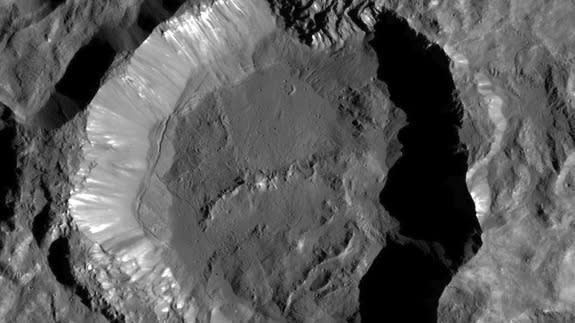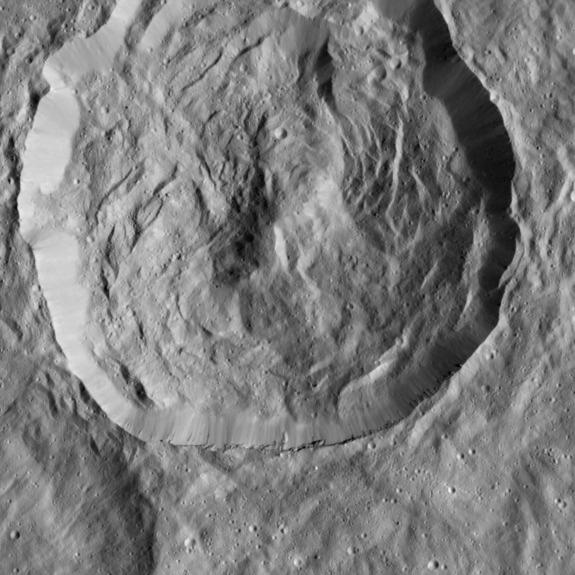Get lost exploring craters on the dwarf planet Ceres in new NASA photos

New photos of the dwarf planet Ceres show off the intricate details of craters that dot the surface of the cosmic body.
NASA's Dawn spacecraft took these new pictures of Ceres — the largest object in the asteroid belt between Jupiter and Mars — at the end of December, when it just 240 miles from the dwarf planet's surface.
"Everywhere we look in these new low-altitude observations, we see amazing landforms that speak to the unique character of this most amazing world," said Chris Russell, principal investigator for Dawn, in a statement.
See also: Here are NASA's closest-ever photos of the mysterious dwarf planet Ceres
A crater in one of these images, called Kupalo Crater, is about 16 miles wide and is one of the youngest craters yet found on the dwarf planet.
Kupalo's rim plays host to some bright areas that might be salt deposits. These bright spots could be related to the reflective patches in the Occator Crater — the impact crater known for its prominent mysterious bright marks, according to NASA.

Image: NASA/JPL-Caltech/UCLA/MPS/DLR/IDA
By studying the geology of these craters, scientists may be able to piece together how Ceres evolved into the strange looking, craggy world it is today.
The Dantu Crater's floor, for example, has fractures which look somewhat like the fissures on the floor of the Tycho Crater on the moon, NASA said. This fractured pattern may have been created when the floor of the crater cooled after being partially melted by the impact that created Dantu, NASA added.
Scientists will look closely at that crater as Dawn keeps studying Ceres, Paul Schenk, Dawn science team member, said.

Image: NASA/JPL-Caltech/UCLA/MPS/DLR/IDA
The Dawn mission marks the first time a human-made spacecraft has orbited a dwarf planet. The probe arrived at Ceres in March 2015 after studying the asteroid Vesta for a little more than a year from 2011 to 2012.
Dawn's primary mission should end on June 30 and it is expected to stay in its current, low orbit for the rest of its time studying the dwarf planet.
"When we set sail for Ceres upon completing our Vesta exploration, we expected to be surprised by what we found on our next stop," Russell said. "Ceres did not disappoint."
Have something to add to this story? Share it in the comments.



